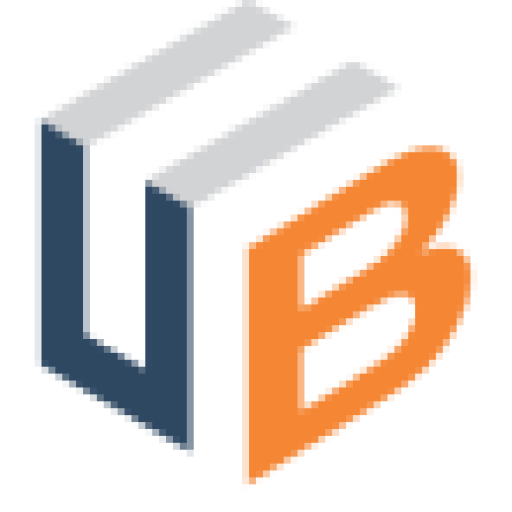
Introduction
The software-as-a-service (SaaS) field has evolved into a leading global industry expansion sector because businesses are now transitioning from their internal software systems to cloud-based solutions. The U.S. and Canada offer SaaS companies a continuously evolving market, creating new opportunities for SaaS product marketing and expansion.
The Canadian SaaS industry counts 992 operating businesses which sustain the entire SaaS business fabric. Research indicates that SaaS will grow 13.5% annually until 2027 when it reaches $400 billion from an initial value of $253 billion in 2024. Businesses implementing cloud-based operations such as CRM, ERP, web hosting and eCommerce will drive sustained growth of SaaS product demand.
SaaS Market Growth and Opportunities
The SaaS sector continues to expand rapidly due to lowered entry requirements and reduced development costs. Additionally, the ability to provide immediate software updates allows companies to better meet customer needs.
The ongoing emergence of new SaaS products creates aggressive market competition which demands that companies build innovative solutions combined with strong marketing approaches to stay differentiated.
The rising market demands force SaaS companies to deliver enhanced service security alongside scalable solutions and user-friendly interfaces. North America leads SaaS market maturity globally yet the rising adoption of advanced technologies produces both market hurdles and chances for growth.
Leading companies like Google, IBM, Microsoft, and Salesforce continue to dominate yet numerous smaller SaaS startup companies are gaining momentum.
Key Challenges in SaaS Marketing and How to Overcome Them
Saas product marketing requires approaches that deviate from conventional methods for product promotion. The absence of physical products, together with software development speed and changing customer needs, creates a distinct marketing challenge. SaaS marketers need both creativity and agility, together with a readiness to adjust strategic approaches.
Key factors that marketing professionals need to consider include:
- Continuous Updates: SaaS solutions continuously update without following the traditional physical product update method. To satisfy customer expectations, the product needs regular updates and fast responses to new features that appear in real time.
- Customer Retention: Maintaining customer loyalty measures just as effectively as acquiring new customers; the success of SaaS companies. Constant customer defections create serious damage to product success potential. Marketers need to develop extended customer engagement practices because this enhances customer lifetime value (CLV).
- Easy Onboarding: A successful SaaS marketing strategy requires easy-to-use procedures that guide new users through setup processes. Made-in-transition processes from trials to subscriptions need to be streamlined for customers to achieve value rapidly.
- Cost-Effective Marketing: The subscription model of SaaS demands effective marketing strategies that bring maximum return compared to cost. Companies require methods that direct their marketing budget toward profitable lead generation tactics.
B2B SaaS Market Data for 2025
The B2B SaaS market displays strong potential for continuous growth during the next upcoming years. The SaaS adoption rate in North America represents 65% of total SaaS revenue, while Canada demonstrates enhanced growth because of its tech industry expansion across Toronto, Vancouver, and Montreal.
Key trends in the 2025 SaaS market include the following:
- AI-Driven SaaS Tools: The growing adoption of AI technology makes SaaS firms in the U.S. and Canada dedicate their efforts to developing AI-enabled analytics solutions together with automation as well as personalized user experiences. When HubSpot launched AI-powered predictive lead scoring in 2024, they saw their B2B user conversions increase by 30%.(smartlead.ai)
- Increased Focus on Cybersecurity SaaS: A recent survey found that 78% of organizations plan to increase their identity security spending in 2025, with a notable shift toward advanced Identity and Access Management (IAM) solutions. The top three areas of investment for 2024 cybersecurity budgets are internal security assessments (60%), IAM programs (58%), and the acquisition of additional cybersecurity tools (51%). Okta, together with Vanta, stands at the forefront of the new wave of SaaS adoption.
- Vertical SaaS Expansion: SaaS companies now specialize in vertical market solutions to serve customers in healthcare industries, financial institutions, and logistics operations. Vertical SaaS solutions will capture 20% of SaaS market revenue globally by 2025.
- Remote Work Adoption: Remote work adoption shows stability from the pandemic-inflicted surge while hybrid work models maintain their position as the new normal. The growing popularity of team management SaaS applications like Asana, Slack, and Zoom will continue as 75% of North American hybrid workspaces plan to adopt three or more SaaS tools in 2025.
B2B SaaS Market Trends in the USA & CANADA
The U.S. and Canadian markets show strong potential for SaaS products to succeed across several sectors, including hybrid cloud solutions, CRM, ERP, eCommerce, and other areas. The North American SaaS market continues to expand rapidly yet faces ongoing difficulties in data protection and regulatory adherence and market competition.
The SaaS industry continues to evolve in Canada because cities, including Toronto, Vancouver, and Montreal, welcome an increasing number of new SaaS startups. New technology clusters outside California’s traditional tech area have formed due to rising global demand for software as a service solutions.
The United States leads revenue-wise with $138.8 billion, while the United Kingdom follows with $10.1 billion, and Canada trails with $5.8 billion. These markets are witnessing an accelerating competition shift as international firms outpace one another to reshape the SaaS industry.
Winning SaaS Marketing Strategies for the USA and Canada
The process of marketing SaaS products across U.S. and Canadian territories requires marketers to focus on both rapid sales cycle velocity and customer-oriented tactics. SaaS product marketing requires fast cycle times because marketers must build trust and show value before securing sales.
Marketing approaches should deliver immediate results through precise target-focused strategies because relationships develop over extended periods of time.

Here are some core marketing strategies to implement:
1. Agile Marketing
SaaS operations need agile marketing because they operate at high speed. A cyclical approach enables marketers to rapidly execute new campaign ideas which helps them get better results through customer feedback. Agile marketing encourages adaptations of marketing strategies based on customer requirements with immediate campaign changes possible.
2. Content Marketing
The success of educating potential SaaS customers about products heavily depends on content marketing. Organizations build trust with prospects while attracting them through the creation of valuable content including guides and webinars and blog posts and case studies. Content marketing educates potential customers and guides their purchasing choices through its clear demonstration of product value and its ability to tackle specific customer problems.
3. Email Marketing
The power of email marketing endures for SaaS businesses because its ability to develop leads and sustain customer contact remains vital. Businesses utilize automated email workflow automation to interact with customers while simultaneously sharing product updates and guide their leads toward sales conversion.
4. Growth Marketing
The emphasis in growth marketing extends past lead development because it specifically targets the establishment of enduring customer relationships. Your path to successful customer relationships starts with customer profiling along with a need assessment to create personalized solutions that drive customer retention.
5. Inbound Marketing
Inbound marketing places the customer first while delivering useful content throughout each step of their decision-making process towards becoming a customer. When brands adopt this strategy, they become trusted resources rather than aggressive sellers.
6. Product Marketing
Effective SaaS product marketing requires precise positioning of your offering alongside messaging that suits your selected audience groups. The product marketer must validate the product meets customer needs while delivering its distinctive worth throughout its messaging.
7. Account-Based Marketing (ABM)
Enterprise-focused SaaS startups require Account-Based Marketing as their main strategic approach. The process includes customized outreach toward targeted accounts while providing account development services that result in eventual purchase decisions from those accounts. SaaS companies utilize ABM to target important prospects while optimizing their marketing

Launching Your SaaS Product: 3 Key Steps
SaaS platform launches require deep customer insight so marketing strategies can effectively match client requirements for successful outcomes. The following three steps lead to launch success:
- Refine Your Hero Statement: Define your target audience, then create a simple hero statement that presents clear evidence of your SaaS solution’s problem-solving capabilities and superior effectiveness. To ensure that your product message reaches the right audience, it’s crucial to focus on the correct customer segment.
- Set Clear KPIs: Determine essential key performance indicators that serve as markers to evaluate your SaaS marketing achievements. Measuring conversion rates together with lead quality and customer retention success significantly benefits a SaaS business. Use the SMART goal-setting method (Specific, Measurable, Achievable, Relevant, and Time-bound) for monitoring progress alongside making data-based decisions.
- Align Sales and Marketing Teams: Sales teams require marketing teams for maintaining consistent lead generation alongside appropriate follow-up procedures. Service Level Agreements (SLAs) between the teams will specify the expected follow-up requirements combined with lead quantity and quality criteria. Sales and marketing alignment produces maximum revenue output.
How to Future-Proof Your SaaS Marketing Strategy
As the B2B SaaS landscape evolves, marketers must adapt to new trends and demands to stay competitive:
- Add Data-Driven Personalization: Gartner forecasts that 80% of future-generation B2B SaaS buyers will demand personalized buying experiences that address their industry and address their documented pain points.
- Focus on Retention over Acquisition: Customer retention initiatives produce better results when compared to acquiring new customers since they require five times more investment. Organizations implementing retention-focused strategies that include onboarding programs alongside customer success solutions and usage analytics have achieved churn reductions exceeding 20%.
- Revamp Pricing Models: Usage-based pricing models are gaining traction. By 2025, over 40% of SaaS companies in North America will adopt pay-as-you-go pricing models to attract cost-conscious customers.
Are You Ready to Market Your SaaS Product in the USA and Canada?
In many ways, SaaS marketing and other types of digital marketing are similar, but nowhere else will you find the close integration and synergy that you will find in SaaS marketing.
SaaS marketing shares similarities with other forms of digital marketing, but nowhere else will you find the same seamless integration and synergy that define this space. It’s a dynamic ecosystem where strategy and execution align perfectly to drive results.
For B2B lead generation companies in the US and Canada, the opportunities are boundless. Now that you’re equipped with the tools and insights to launch a winning campaign, it’s time to harness the power of experts. Partner with a team that transforms potential into performance and ensures your business reaches new heights.
Unbound uses AI-driven marketing campaigns to collect purchase intent data of actual buyers and deliver 100% qualified leads. If you want to discuss more about your marketing needs, schedule a consultation.
Our blog
Latest blog posts
Tool and strategies modern teams need to help their companies grow.

It is for fact that today's buying environment demands more. With longer sales cycles...

To build a marketing strategy that drives real results, you need more than creative i...

The 95/5 rule in B2B marketing shows that while only 5% of buyers are ready to purcha...







